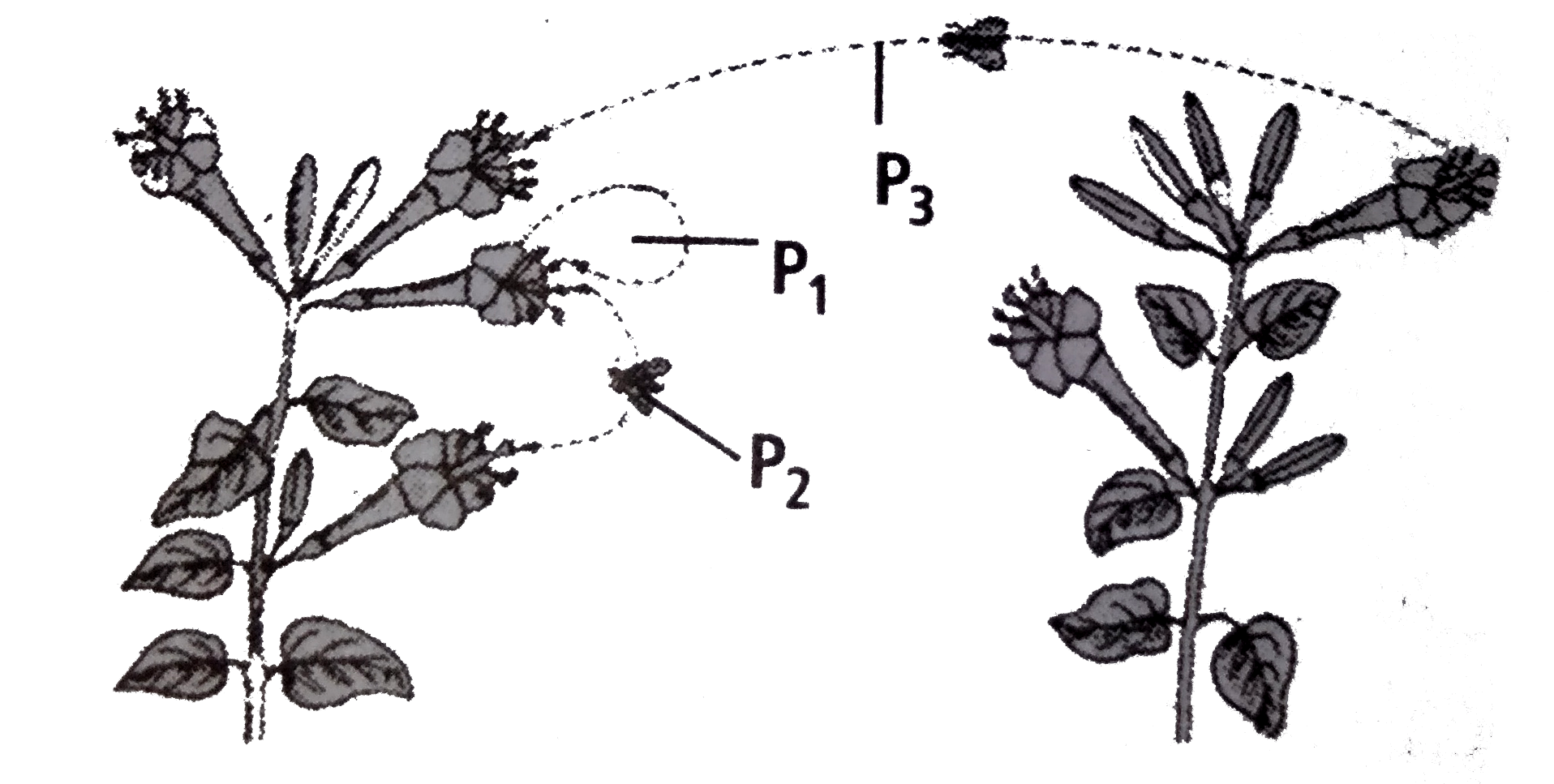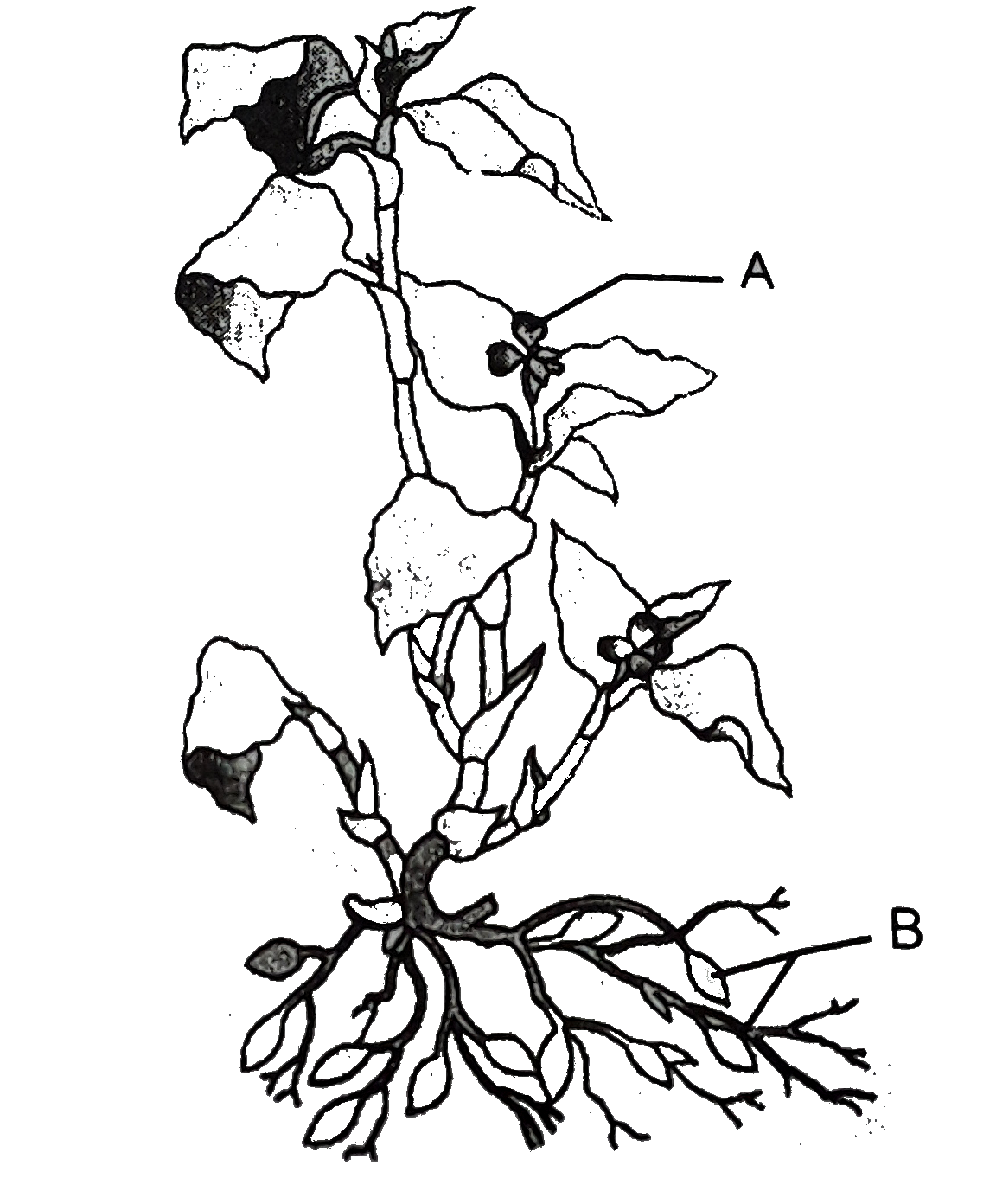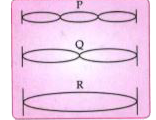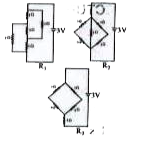The given diagram shows two plants of the same species. Identify the types of pollination indicated at P1,P2 and P3.

P1P2P3AllogamyChasmogamyCleistogamy
P1P2P3AutogamyXenogmayGeitonogamy
P1P2P3AutogamyGeitonogamyXenogamy
P1P2P3GeitonogamyAllogamyAutogamy
The correct Answer is:C
Autogamy (GK. Autos-self, gamos-marriage) is a type of self pollination in which an intersexual or perfect flowers is pollinated by its own pollen. Geitonogamy (GK. Geiton-neighbour, gamos-marriage) is a type of pollination in which pollen grains of one flower are transferred to the stigma of another flower belonging to either the same plant or genetically similar plant. In geitonogamy, the flowers often show modifications similar to ones found in xenogamy or cross pollination. Xenogamy (GK. xenos-strange, gamos-marriage) or cross pollination is the transfer of pollen grains from anther of one flower to the stigma of a genetically different flower.
Topper's Solved these Questions
- BOOK - NCERT FINGERTPS ENGLISHCHAPTER - SEXUAL REPRODUCTION IN FLOWERING PLANTSEXERCISE - HOTS5videos
SEXUAL REPRODUCTION IN FLOWERING PLANTS
- BOOK - NCERT FINGERTPS ENGLISHCHAPTER - SEXUAL REPRODUCTION IN FLOWERING PLANTSEXERCISE - NCERT20videos
SEXUAL REPRODUCTION IN FLOWERING PLANTS
- BOOK - NCERT FINGERTPS ENGLISHCHAPTER - REPRODUCTIVE HEALTHEXERCISE - Reproductive Health133videos
REPRODUCTIVE HEALTH
- BOOK - NCERT FINGERTPS ENGLISHCHAPTER - STRATEGIES FOR ENHANCEMENT IN FOOD PRODUCTIONEXERCISE - Strategies For Enhancement In Food Production151videos
STRATEGIES FOR ENHANCEMENT IN FOOD PRODUCTION
Similar Questions
Pollination between flowers borne on two different plants of the same species refers to:
View Solution(a) Using the phenomenon of polarization, show, how, transverse nature of light can be demonstrated.
(b) Two polaroids P1andP2 are placed with their pass axes perpendicular to each other. Unpolarised light of intensity 10 is incident on P1. A third polaroid P3 is kept in between P1andP2 such that its pass axis makes an angle of 30∘ with that of P1. Determine the intensity transmitted through P1,P2andP3.View Solution
Knowledge Check
- Question 1 - Select One
In the given reaction

Identify P and QA B
B C
C DAll of these
DAll of these
Two bulbs are reled (P1,V) and (P2,V). If they are connected (i) in series and (ii) in perallel across a supply V, find th power dissipated in the two combinations in terms of P1 and P2.
View SolutionIn the figure given below the plant bears two different types of flowers marked 'A' and 'B'. Identify the types of flowers and state the type of pollination that will occur in them.
 View Solution
View SolutionIf the lengths of the perpendiculars from the vertices of a triangle ABC on the opposite sides are p1,p2,p3 then prove that 1p1+1p2+1p3=1r=1r1+1r2+1r3.
View SolutionThe adjacent diagram shows three different modes of vibrations P, Q and R of the same string.

State the ratio of wavelengths of P and R.View SolutionIdentify X and Y in the given reaction:
P4+HNO3→X+Y+H2OView SolutionLet P1:x−2y+3z=5andP2:2x−3y+z+4=0 be two planes. The equation of the plane perpendicular to the line of intersection of P1=0 and P2=0 and passing through (1,1,1) is
View SolutionFig shows three resistor configuration R1,R2andR3 connected to 3V battery. If the power dissipated by the configuration R1,R2andR3 is P1,P2andP3 respectively, then
 View Solution
View Solution

